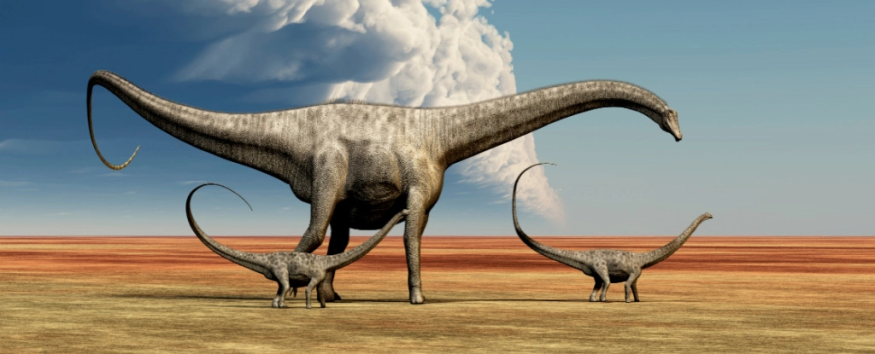A group of paleontologists and aerospace engineers conducted a study to determine whether the long-necked sauropods, a type of dinosaur, could whip their tails fast enough to produce a small supersonic boom, similar to the crack of a whip. The latest research findings were posted in the journal Scientific Reports.
Previous analysis has suggested that these herbivorous dinosaurs may have used their tails for self-defense against predators or to ward off other animals, but this theory has been disputed by some paleontologists. The study aimed to clarify the function of the long, slender tails of diplodocid dinosaurs, a group that includes the Brontosaurus.
In addition to potentially serving as a defensive weapon, the long tails of diplodocid dinosaurs may have been used for various other purposes, such as making noise, balancing their long necks, prodding the ground, and stabilizing their bodies like a third leg. These dinosaurs, which include some of the longest creatures to have ever lived, have long been a subject of interest for both paleontologists and engineers due to their unique physical features.
Creating Model Tail
This latest study was conducted by a team led by paleontologist Simone Conti from NOVA University in Portugal. Since no complete diplodocid tail has been found, the team used information from five fossilized diplodocid dinosaurs to create models of the tails. They also included data on the soft tissues such as skin, tendons, and ligaments, as well as the approximately 80 vertebrae that make up the tails of these dinosaurs. In comparison, humans have just 33 vertebrae in their entire spine.
The internal structure and makeup of the soft tissues in sauropod tails are largely unknown, as only skin impressions and bones are preserved in the fossil record. As a result, Conti and the team had to infer the structure of the soft tissues based on the bone structure and estimate the thickness of the skin based on crocodile skin. They then modeled the mechanical strain that the soft tissues could withstand as the tail moved back and forth.
In the computer models, the team simulated a diplodocid tail that was attached to an unmovable hip bone and weighed 1,446 kilograms (3,187 pounds) with a length of 12 meters (40 feet). While the tail may appear strong, it has limits due to the complex nature of skin, which is made up of collagen fibers that give it elasticity but become brittle when subjected to high strain. By simulating the mechanical properties of the soft tissues and the rotational movement of the tail, the team found that the tails of diplodocid dinosaurs were "stiffer compared to the previous analysis," with the musculature and tendons playing an important part in stopping the vertebrae from disarticulating once the model-tail was set in action.

ALSO READ : Dinosaurs With Long Neck and Tail Had Unique Gait; Sauropods Walked Like Hippopotamus, Study Says
Single Whip Sonic Boom
However, the simulated tail did not break the sound barrier due to the friction of the tail muscles and vertebrae, as well as aerodynamic drag. If it had, the tail would have snapped. The tip of the tail moved at speeds of around 30 meters per second or 100 kilometers per hour, which is 10 times slower than the speed of sound (340m per second) but still not swift enough to form a supersonic boom. A thin, whip-like tail would not be able to withstand the stress of moving at the speed of sound without breaking, regardless of whether it was made up of braided keratin filaments like other dinosaur taxa, or three segments of skin and keratin, or a fleshy flail-like mass.
Even if the hip bone greatly increased the movement of the tail, the estimated resistance of the soft tissues would not support the supersonic movement of dinosaur tails, according to the study's authors. While the simulated tail was not able to break the sound barrier, the researchers suggest that this does not necessarily rule out the possibility that diplodocid dinosaurs might have used their tails to deliver defensive blows or engage in intraspecies combat.
The team calculated the force of impact of the tail traveling at speeds of around 30 meters per second and found that it would be equivalent to the pressure applied to a golf ball spanning 315 km per hour (196 miles). While this pressure would not be sufficient to break bones or lacerate skin, it would still deliver a significant blow.
RELATED ARTICLE : Diplodocid Dinosaurs Can Ignite Supersonic Boom With Tailwhip Ranging Up to 100 km/h, Study Suggests
Check out more news and information on Paleontology in Science Times.
© 2025 ScienceTimes.com All rights reserved. Do not reproduce without permission. The window to the world of Science Times.











